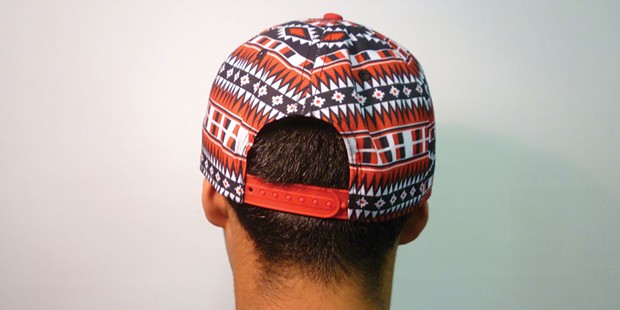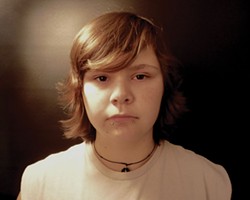[
{
"name": "Top Stories Video Pair",
"insertPoint": "7",
"component": "17087298",
"parentWrapperClass": "fdn-ads-inline-content-block",
"requiredCountToDisplay": "1"
}
]
The judge is chewing gum. Her hair is piled in a messy bun on top of her head, where a pair of sunglasses also rests. She giggles shyly as she walks up to the podium and adjusts the microphone. Teen Court is now in session.
A national diversion program, Teen Court is operated locally through the Boys and Girls Club of the Redwoods. The crime is real, the court is real and the sentence is real, although the emphasis is on rehabilitation rather than punishment. The goal is to steer young offenders away from probation, juvenile hall and future infractions. Every position in court — the judge, clerk, attorneys and jurors, is filled by a teenager. The process can be as transformational for the teen volunteers as it is for the defendants.
Madeline Scott, a junior at North Coast Preparatory Academy, served as the defendant's attorney in the case we witnessed. A tall, poised young woman with a long mane of blonde hair, she has both learned about restorative justice and improved her public speaking skills in her three years volunteering with Teen Court. This was her second time serving as a client attorney. (Rather than "defense" and "prosecution" Teen Court has "client" and "community" attorneys.) Before entering the courtroom, she did some legwork.
"I called the defendant and asked questions. It's difficult because they don't always want to answer the questions you have," she says.
Normally juvenile cases are off-limits to the public, and for privacy reasons, we agreed not to disclose information about the defendant or the circumstances of his offense. Rest assured, though, it was pretty average teenage stuff: the usual combination of bad friends and bad choices. Scott says teenagers are better equipped than most to understand how someone their age can end up on the wrong side of the law.
"A lot of cases involve marijuana. I really feel when it happens, teens can relate," Scott says. "Because a lot of our economy runs on the pot industry, it definitely affects the children. It's more normal and accepted here."
Eureka Police Capt. Brian Stephens, who serves as the department's Teen Court liaison, agrees.
"When I look at it and where my kids are growing up, I think it's very challenging," he says. "I watch the challenges they face and I think it's scary."
The majority of referrals for Teen Court come from local high schools, but some also come in from the juvenile probation department and law enforcement agencies. According to Stephens, the type of crimes that qualify a youth for restorative justice are usually those that an adult wouldn't be cited for, like smoking pot during recess. The juvenile must admit his or her guilt and voluntarily participate in and accept whatever sentence is handed down. Over the last three years, a total of 61 cases went to Teen Court (the organization can handle much more, up to 60 a year). Only about 6 percent of juveniles referred to the program reoffended or failed to finish their sentences, according to Teen Court Director Sacha Marini. When EPD's memorandum with the program was renewed in March of this year, Marini and Stephens reviewed past cases to see if there were more instances in which the restorative practice could be used.
"With Teen Court, we can get people as they begin that path towards delinquency and connect them with a positive peer group. I think it's a great program," Stephens says. "Over the years there's a lot of cases I wish had gone through there."
Back in court, the cross-examination has begun. The attorneys ask the defendant about his grades, family role models, peer group and goals. The community attorney's notes are written in a school notebook, opposite a page of doodles. A family member is called up and questioned with the help of a volunteer interpreter from the Boys and Girls Club. All of the teen leaders are shadowed by their adult mentors, two attorneys and a judge, respectively. The mentors, who also volunteer their time, are on hand to give direction or answer questions.
Ryan Hurley, a local estate and probate lawyer who mentored the community attorney, says he is continually impressed with the teens.
"Each time I set my expectations a little bit higher, and each time they blow it away," he says. "These kids' eyes are open really wide at a young age. Having participated in a few hearings now, these kids are having to confront substance abuse and drug transactions, not in a casual setting, but in a real nuts and bolts courtroom setting."
As the judge picks her nails, the attorneys explore the defendant's failing grades. What would make the difference? Tutoring? Mentoring? Does the defendant have a place to do homework?
After the information is presented and the jury leaves the room to deliberate, Humboldt Superior Court Judge Christopher Wilson, under whose tenure the program was reinstated (it was on hiatus before 2001, when the Boys and Girls Club helped restart it) uses the time to chat with the teenagers. He tells the defendant, "Your mom wants you to make good decisions. In Teen Court you get a chance."
Bill Damiano, chief probation officer for the county, says Wilson has been a consistent supporter of the Teen Court program and that he often prods the probation department to refer more cases. Damiano believes in the probation system, but he'd also like to see fewer children end up in it. Low-level offenders are often referred to mental health providers and other resources, as well as the Teen Court program.
"Back in the old days, we used to bring everybody into probation. It made them twice as likely to stay in the system," he says. "If we can send them off to Teen Court or some other probation because they're low-risk, we actually reduce their likelihood to return."
When the jury returns to the box, the judge, reading off a script, asks if they have reached a decision. They have, says the foreperson. The defendant is remanded to tutoring, told to meet with a guidance counselor and join a club. They also must serve on a Teen Court jury in the future, which is a mandatory minimum sentence in all cases.
After the sentencing, Wilson queries and jokes with the jurors, many of whom are former defendants. He asks if they felt like the defense and community attorneys did a good job, if the interpreter was useful, and shares his many years of courtroom experience. Many of the teenage jurors are shy, mumbling their answers, with the exception of the extroverted boy who read the verdict.
"Was jury duty hard?" asks Wilson.
"It was easier than sitting there," replies the boy, pointing to the defendant's chair. His peers laugh.
Once court adjourns, the teenagers begin turning on their phones and talking to one another. A group of girls from McKinleyville cluster together, waiting for their ride home.
One of them served as a juror after her own Teen Court experience. She says she believed what the defendant got was fair, and that her experience with the program was largely positive as well.
"The tutoring helped a lot," she said, adding that she was getting ready to go into high school after being held back. "It's hard. I've seen a lot of drug use. But I'm not coming back. I've got a life goal."
more from the author
-
Lobster Girl Finds the Beat
- Nov 9, 2023
-
Tales from the CryptTok
- Oct 26, 2023
-
Graduation Day: A Fortuna Teacher Celebrates with her First Grade Class
- Jul 18, 2023
- More »
Latest in News
Readers also liked…
-
Through Mark Larson's Lens
A local photographer's favorite images of 2022 in Humboldt
- Jan 5, 2023
-
'To Celebrate Our Sovereignty'
Yurok Tribe to host gathering honoring 'ultimate river warrior' on the anniversary of the U.S. Supreme Court ruling that changed everything
- Jun 8, 2023


































